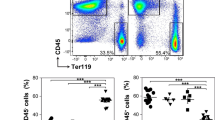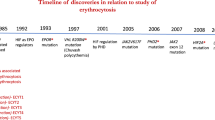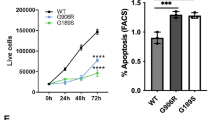Abstract
THE recent communication by Prof. C. J. Dreyer1 on this topic is of great interest in relation to the general matter of the staining reactions of (presumably) collagen fibres. The change in staining reaction from green to reddish-brown with a corresponding change from optical isotropy to anisotropy, in unstressed and stressed bone, respectively, accord well with what has been observed in this Department in work on developing collagenous tissues. Using the Falg technique2,3, it has been found that there are three stages in the development of this tissue which may be called the initial, the semi-mature and the mature. These three stages are distinguishable with the greatest constancy by the readiness with which they accept acid fuchsin, that is, by what has been earlier termed their erythrophilia. In the initial stage, presumptive collagen fibres are weakly erythrophile, in the semi-mature stage they are moderately erythrophile, and in the mature stage they are strongly erythrophile. The Falg technique, as well as others based on a similar chemical process, enables the consequent differences in monochromatic coloration (amplitude) to be converted into corresponding differences in colour (wave-length). Weakly erythrophile elements (of any kind) are coloured blue, the moderately erythrophile are coloured violet and the strongly erythrophile are coloured a deep red. In these reactions the acid fuchsin, which is an amphoteric and not an acid dye, behaves as an acid towards the basic elements of the tissues stained by it. Other acid dyes, for example, light green yellowish SF in the Falg technique, attach themselves to the acid fuchsin basic side-chains in a manner discussed in the papers cited.
This is a preview of subscription content, access via your institution
Access options
Subscribe to this journal
Receive 51 print issues and online access
$199.00 per year
only $3.90 per issue
Buy this article
- Purchase on SpringerLink
- Instant access to full article PDF
Prices may be subject to local taxes which are calculated during checkout
Similar content being viewed by others
References
Dreyer, C. J., Nature, 189, 594 (1961).
MacConaill, M. A., and Gurr, E., Irish J. Med. Sci., 182 (1960).
Gurr, E., and MacConaill, M. A., J. Roy. Micro. Soc., 79, 353 (1961).
MacConaill, M. A., Nature, 180, 603 (1957).
MacConaill, M. A., Proc. Roy. Irish Acad., 50, B, 7 (1944).
Author information
Authors and Affiliations
Rights and permissions
About this article
Cite this article
MACCONAILL, M. Staining Properties of Stressed Bone. Nature 192, 368–369 (1961). https://doi.org/10.1038/192368a0
Issue date:
DOI: https://doi.org/10.1038/192368a0
This article is cited by
-
The Masson staining of collagen ? an explanation of an apparent paradox
The Histochemical Journal (1975)



